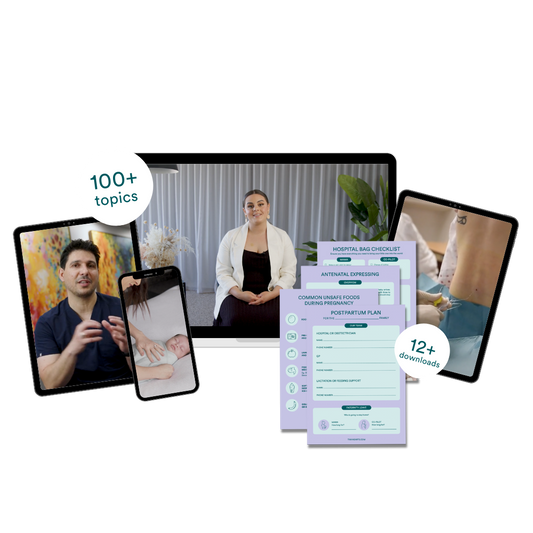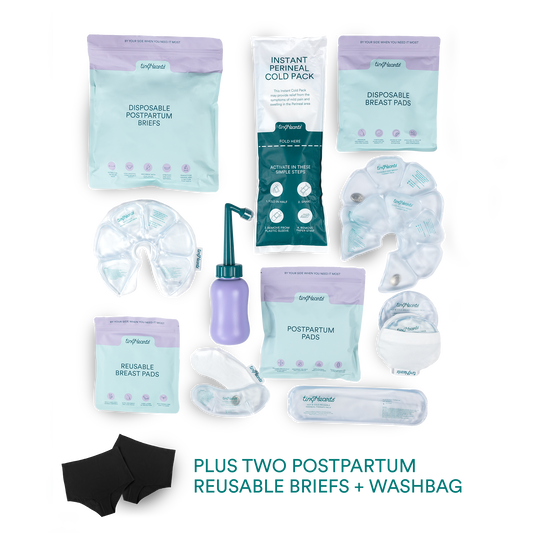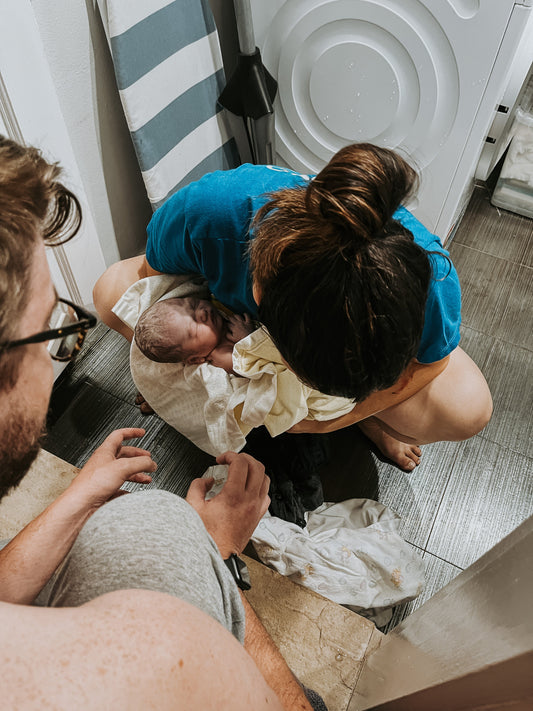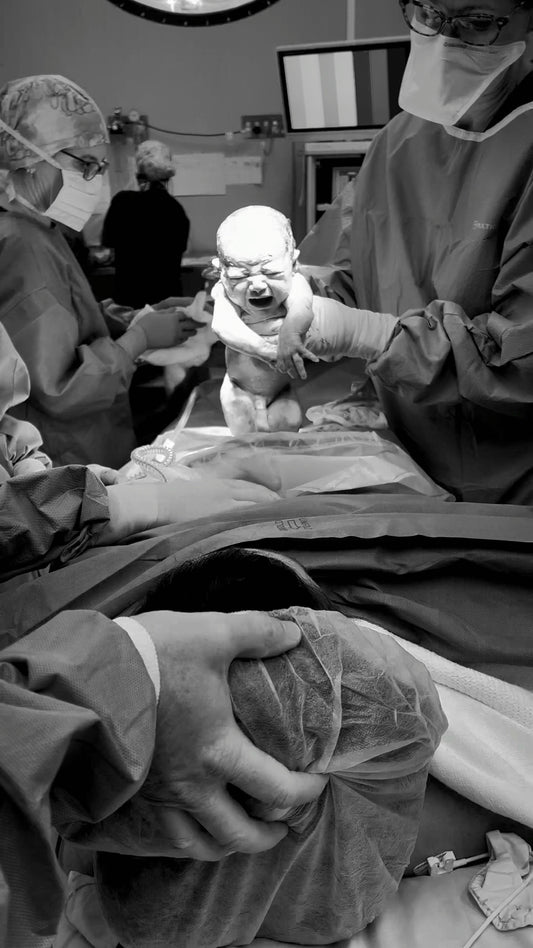My Child's Group A Strep Story

My name is Lyndal and I’ve been following you for quite a while now, your Instagram page is amazing and you’ve helped bring a lot of really important topics to my attention being a first time mum of my now 16 month old daughter, Hadley. I am such an advocate for your medicine fridge trackers, cool packs and absolutely love the family first aid kit. I just wanted to write into you as what I’ve just experienced over the last month I don’t wish upon any parent or family, ever. By sharing my story I can only hope that it spreads some awareness in what to look out for and the early warning signs of an awful, life threatening bacterial infection, Invasive Group A Streptococcus (IGAS). There’s not a lot of information out there about this bacterial infection, however it has been in the news in recent times. I feel if we can better educate parents of it, it just may save the lives of our littles. We had no idea that this bacteria which is normally responsible for tonsillitis or strep throat can result in such a life threatening condition.
My daughter is an active, busy 16 month old. She is the light of our life and our absolute world. She is such a happy, bubbly and smiley girl. I think we can all agree that this winter has been a tough one in regards to sickness and on top of that she started daycare, which is always a revolving door of viruses and illness; but this time it just felt different. It started with a persistent fever that just wouldn’t ease, even with Panadol. A trip to the GP in the morning we were told that while her throat was very red, she most likely had a virus and to just monitor her.


At home for the rest of the day she was her chirpy, bright self until late afternoon when she became very lethargic and ‘out of it’. Around dinner her fluid and food intake heavily reduced and later developed to excessive vomiting in a very small space of time. Worried about dehydration and something more sinister we called the Northern Hospital Virtual ED (which we can’t rate highly enough in VIC) and got through straight away to a paediatric doctor. She took one look at Hadley via video call and told us to call an ambulance.
The ambulance arrived and I packed a bag in a hurry and we requested to be taken to Monash children’s Hospital. We got in just after midnight and spent the early hours of the morning in the ED being moved to their short stay ward. Early hours of the morning she had picked up a little and was eating and drinking. We got told that she was okay and after further monitoring we may have been able to go home late morning. I was relieved. As the hours progressed and we edged closer to a potential discharge, she started deteriorating, a change of shift and the doctor suspected she was in fact severely dehydrated and potentially had a bad case of gastro as she began having explosive diarrhea. They decided to put in a nasogastric tube to give her fluids. Two lots of fluids through the tube and she didn’t perk up as much as the staff were hoping and as a precaution they decided to perform a heel prick. It was at this point she started becoming confused and quite agitated and irritable, just wanted to lay down and sleep. She was going down hill fast and the ED doctor suspected there was something more serious going on. From the blood test, the lactate levels were extremely high, which indicated a possible infection. By this stage we noticed her hands and feet went very cold and purple and her chest went a purple mottled colour with her refill at about 8-10 seconds, It was getting harder for her to breathe.


Hadley was now mentally confused and did not know who we were, not responding to mum or dad. They wanted to do full bloods via a cannula in her arm (not something they do lightly on a baby of that age) as they wanted to check the lactate levels again and get more accurate information, full bloods and blood culture sent for growth to check for bacteria. The doctor was really concerned by this point as they couldn’t keep up with the fluids and she was deteriorating quickly, we were rushed into the resuscitation ward were they inserted a second cannula into her other arm and began pushing broad spectrum antibiotics as quickly as the machine would allow. This is when the first of many MET calls for our baby occurred, she was quickly assessed by a PICU consultant as her blood pressure was plummeting, and her extremities were discolouring rapidly. She made the call to take action urgently, her heart was not coping and her body was shutting down. She was critical. Her little body had gone into severe septic shock from what they thought was some kind of bacterial infection in her blood. In a split second the PICU consultant had made the decision and we got told she needed to be sedated and intubated immediately. Another MET call and all of sudden we had around 20+ medical staff in the room to save her life and a PIPER retrieval team from the Royal Children’s was requested as they were worried about her heart. We had to leave the room whilst they did this. I was in utter shock, I didn’t want to leave her, but I kept reminding myself that she was in the best place possible. What we thought was going to be 15 minutes of waiting, ended up being over two a half hours. You could hear the machines and various alarms going off loudly in the other room and lots of people moving around, my heart sank to the floor. I will never forget it.

Going back into that room was the most difficult thing I have ever done. We walked into a scene that no parent should ever have to experience, our little angel had numerous tubes and wires attached to her. And the sound of the ventilator is something that will forever stick with me. The head consultant then gave us the update that we came extremely close to losing her, but they’d been able to stabilise her for now. The PIPER team from RCH had arrived via helicopter ready to assess her, they were happy Monash had it under control, albeit being kept alive by four inotropes (medications to keep her heart pumping.) They also had an ‘Arctic sun’ wrapped around her to help cool her core body to prevent further damage. She was now critically stable. She was then transferred upstairs as a high priority PICU patient and we began the awful waiting game. It was two weeks of ups and downs, she had complication after complication. A major one being a clot from the arterial line in her groin being used to accurately measure her blood pressure. This together with the bacterial infection put her left leg at risk. This is still an ongoing battle, plastic surgeons are keeping a close eye on it as she has compartment syndrome and Volkmann’s contracture in her calf and ankle as a result of the compromised blood flow. It will be a long road with lots of rehab and potential surgeries ahead with no guarantee of a full recovery, but we are getting there day by day.

Our little fighter defied all odds and is here with us today. She is smiling and giggling again and despite the issues with her foot, is still determined to get back to her pre-sickness standing and learning to walk. We are so grateful for all the beautiful amazing doctors and nurses that have helped our little Hads at the Monash Children’s. The reality is If we didn’t seek medication attention when we did then we wouldn’t have her here with us today. We didn’t know that when Invasive Group A streptococcus strikes, you need to seek medication attention asap, especially with infants and children. They can go downhill fast within a <6 hour period. It was just so lucky that we called an ambulance when we did and that we were in the hospital when it all went down. It’s sad to now know the reason Invasive Group A streptococcus is so devastating is because these early warning signs are missed and it’s often too late to treat. Parents are told it’s just a virus, which it can present as very early on. But the hospital staff told us they would rather parents present multiple times than have it be too late. And remember, you know your kid best and you can ALWAYS advocate for them if you’re worried. I’m just so glad we trusted our gut instincts, as they were right and also had professionals around us that didn’t dismiss our concerns. I hope my story helps other families out there.
Thank you to this mama for using her story to educate other parents in our community.
What is Group A Streptococcus?
A bacteria that can be found in the throat and the skin.
The cases where it becomes more serious is when the bacteria invades the body and enters areas such as the blood, this is called invasive group A streptococcal disease
What are the symptoms of Group A Streptococcus?
Symptoms depends on where the infection develops in the body:
- Symptoms of strep throat:
- pain when swallowing
- fever muscle aches and pains
- tiredness
Symptoms of scarlet fever
- red, sore throat
- swollen glands
- fever
- red blotches on the skin
Symptoms of Impetigo
- red sores on the skin that form blisters
- blisters pop and leave a moist area with yellow/brown crust at the edge
Symptoms of cellulitis
- skin is red, painful and swollen
- may feel tight and warm to touch
Symptoms of necrotising fasciitis
- fever
- diarrhoea vomiting
- severe pain at site of wound
- intense thirst
- purplish rash
What are the signs of invasive Group A Streptococcus?
- fevers
-chills/sweats
- dizziness
- shortness of breath, chest pain
- headache or stiff neck
- nausea and vomiting
- red warm painful and rapidly spreading skin infection
When should I see a doctor?
If you suspect you or your little one has a Group A streptococcal infection.
How is Group A Streptococcus treated?
Most Group A Streptococcal infections are treated with antibiotics. Your doctor will determine the most suitable antibiotic depending on where the infection is located and the severity.
How do I prevent getting Group A Streptococcus?
To understand how to best prevent a Group A Streptococcus infection, it is important to understand how this bacteria spreads. Infection of the Group A Streptococcus bacteria is spread through cough or sneeze droplets and skin-to-skin contact.
Maintaining good hygiene, washing hands frequently can help to decrease the spread of the bacteria.
online baby & child first aid
$145
Learn baby & child first aid from your device at home! Purchase now and learn right away.
Our instant access course includes over 38 videos and 15 bonus downloads including content on whooping cough, croup and more!









